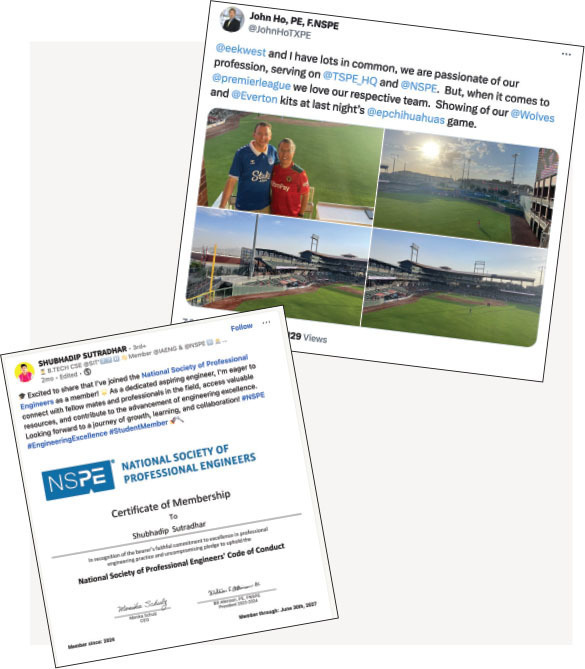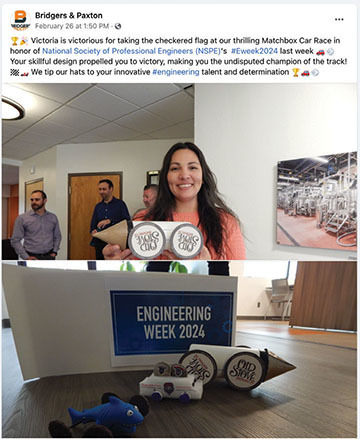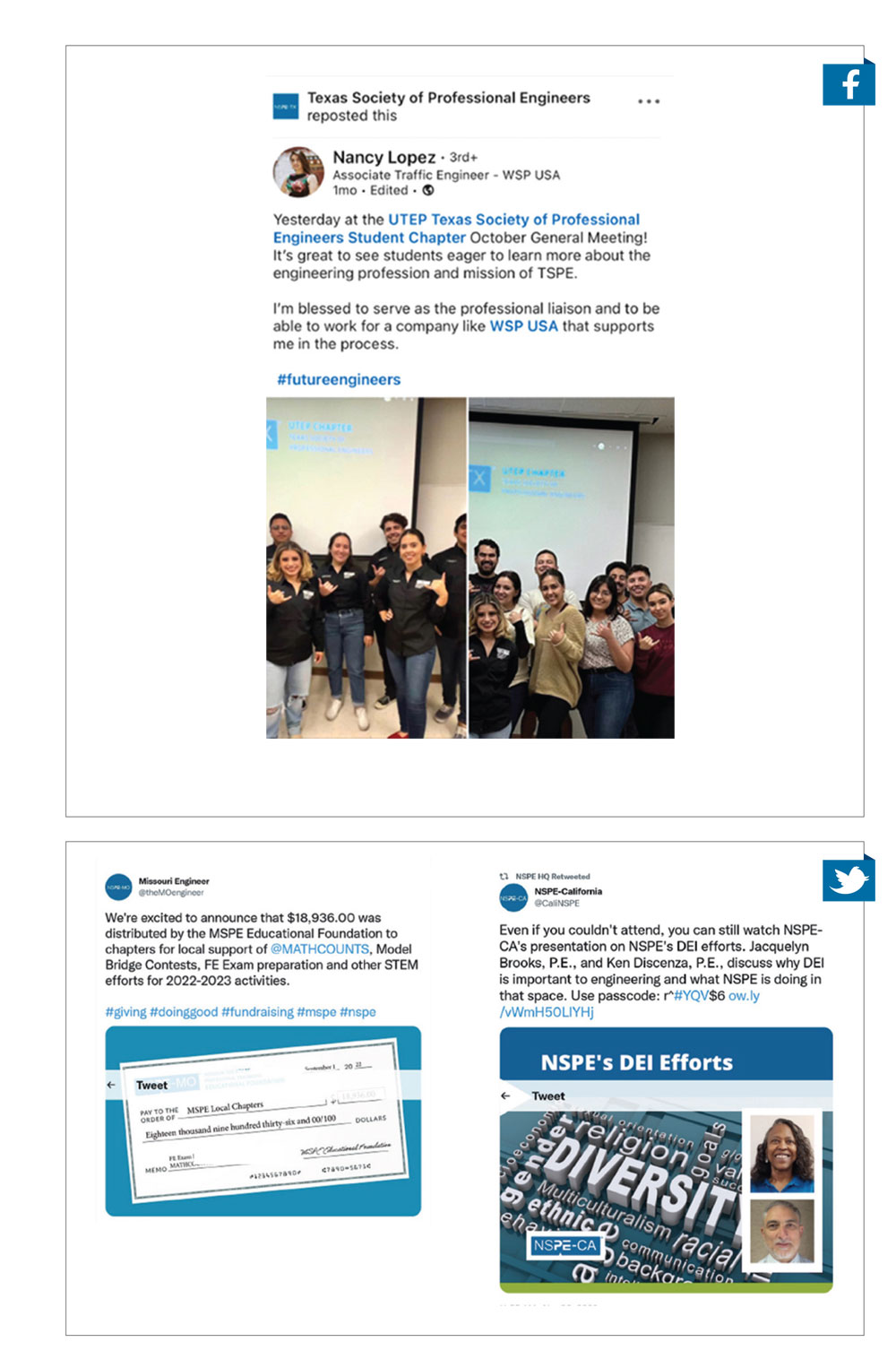July/August 2019
You Said It
Resilent Infrastructure Not Enough
I am disturbed by the omission of the May issue of PE magazine, entitled “(High) Winds of Change,” to recognize the need to mitigate dangerous greenhouse gas emissions. Under the rubrics of “sustainability” and “resilience,” professional engineers correctly describe their ethical obligations to design civil infrastructure that will resist floods, drought, stronger and more frequent hurricanes and tornadoes, and rising seas brought on by the accumulation of greenhouse gases.
But it is clear that design of resilient infrastructure will be of inconsequential benefit if the climate continues to warm. Unless human-caused greenhouse gas emissions are controlled, as soon as possible, the world will warm with disastrous consequences, and with which the engineering profession will be unable to cope. Professional engineers, who are ethically obligated to protect the public welfare (current and future), and who are in a position to understand the science, should be committed to mitigation of climate change through control of dangerous emissions. Adaptation to climate change will be insufficient to protect the public safety.
From a technical viewpoint, we know how to control greenhouse gas emissions at reasonable cost. The engineering profession should advocate for this necessary action.
The cost of climate change mitigation is far less than the cost of adaptation. If the professional engineering profession is not part of the solution, it is part of the problem.
Walter Gerstle, Ph.D., P.E.
Department of Civil Construction and Environmental Engineering
University of New Mexico
Albuquerque, NM
Licensing Exemptions
Legislation has been introduced in both the House and Senate (H.R. 2139, S. 1097) that would eliminate engineering license exemptions for work done on public utility pipelines. The bill is in response to the Merrimack Valley, Massachusetts explosion last year, and subsequent investigation by the National Transportation Safety Board. Take part in NSPE’s advocacy on this issue.
The utility exemption is long overdue to be rescinded.
My hope, as an electrical engineer who has worked for a time in the utilities, is that the utility exemption for the power side of the house is rescinded in short order too. It may not be as obvious, but the danger of power T&D can be as present as natural gas. The requirement for “PE seal and sign of electrical utility work” time has come as well.
William Maxwell, P.E.
Syracuse, NY
Regarding the industrial exemption: I believe there is a very significant obstacle to licensing engineers in industry. In many states, at least two that I practice in, NJ and PA, licensed engineers are by law personally responsible for the designs and other documents they seal, despite practicing as a corporation, professional corporation, or limited liability company. So, what licensed engineer would want to put his/her seal on a product design, whether it be an automobile or a toaster, and put his entire personal financial net worth at risk? Despite the fact that he/she may be employed by a very large corporation with large assets and insurance, in the event of an injury or loss, the attorneys for the plaintiff will bring an action against them personally as well as against their employer. For products in mass production, no matter how safe, there will always be injuries and mishaps because of the large number it items out there in use, and in some cases, the judgments can be very large.
And, who would be appropriate to put an engineering seal on the design of, say, an automobile, or airplane? Individual components can probably easily be isolated for assigning a designer of record role, but it seems to me someone would also have to be the designer of record for the overall product.
I think personal liability risk may be a very big barrier to eliminating the industrial exemption.
Gary Smith, P.E.
Fairfield, NJ
I appreciate that many would like a one-fell-swoop removal of the industry exemption. My name isn’t Don Quixote or Sancho Panza; I don’t ride on donkeys and I don’t joust with windmills. The changes recommended deal with the most dangerous non-nuclear process equipment in existence. These involve combustible or explosive process fluids operating at high temperature and high pressure. Due to the inherent dangers involved and the public’s familiarity with past accidents, this is a considerably easier soundbite to gain acceptance for.
It matters not if the perfect bill doesn’t get out of committees, approved by both the House and Senate and signed by the president. Support and lobbying are necessary if we desire a law that we can live with and is in the best interest of the public health and safety.
Mark Van Velzor, P.E.
College Station, TX
MORE Issue 1 2025 ARTICLES

STAY CONNECTED WITH THE PROFESSION AND COLLEAGUES IN NSPE’S ONLINE COMMUNITIES FOR PR

STAY CONNECTED WITH THE PROFESSION AND COLLEAGUES IN NSPE’S ONLINE COMMUNITIES FOR PR

Spring 2023
You Said It

Winter 2022
You Said It


 Volunteering at NSPE is a great opportunity to grow your professional network and connect with other leaders in the field.
Volunteering at NSPE is a great opportunity to grow your professional network and connect with other leaders in the field. The National Society of Professional Engineers (NSPE) encourages you to explore the resources to cast your vote on election day:
The National Society of Professional Engineers (NSPE) encourages you to explore the resources to cast your vote on election day:


